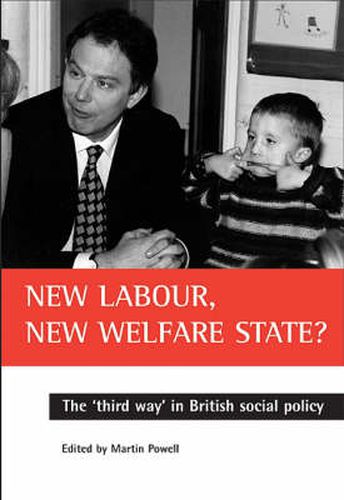Readings Newsletter
Become a Readings Member to make your shopping experience even easier.
Sign in or sign up for free!
You’re not far away from qualifying for FREE standard shipping within Australia
You’ve qualified for FREE standard shipping within Australia
The cart is loading…






The New Labour government elected in May 1997 claimed that it would modernise the welfare state, by rejecting the solutions of both the Old Left and the New Right.
New Labour, new welfare state? provides the first comprehensive examination of the social policy of New Labour; compares and contrasts current policy areas with both the Old Left and the New Right and applies the concept of the ‘third way’ to individual policy areas and to broader themes which cut across policy areas.
The contributors provide a comprehensive account of developments in the main policy areas and in the themes of citizenship and accountability, placing these within a wider framework of the ‘third way’. They find a complex picture. Although the exact shape of the new welfare state is difficult to detect, it is clear that there have been major changes in areas such as citizenship, the mixed economy of welfare, the centrality of work in an active welfare state, and the appearance of new elements such as joined up government at the centre and new partnerships of governance at the periphery.
New Labour, new welfare state? provides topical information on the debate on the future of the welfare state and is essential reading for students and researchers in social policy, politics and sociology.
$9.00 standard shipping within Australia
FREE standard shipping within Australia for orders over $100.00
Express & International shipping calculated at checkout
The New Labour government elected in May 1997 claimed that it would modernise the welfare state, by rejecting the solutions of both the Old Left and the New Right.
New Labour, new welfare state? provides the first comprehensive examination of the social policy of New Labour; compares and contrasts current policy areas with both the Old Left and the New Right and applies the concept of the ‘third way’ to individual policy areas and to broader themes which cut across policy areas.
The contributors provide a comprehensive account of developments in the main policy areas and in the themes of citizenship and accountability, placing these within a wider framework of the ‘third way’. They find a complex picture. Although the exact shape of the new welfare state is difficult to detect, it is clear that there have been major changes in areas such as citizenship, the mixed economy of welfare, the centrality of work in an active welfare state, and the appearance of new elements such as joined up government at the centre and new partnerships of governance at the periphery.
New Labour, new welfare state? provides topical information on the debate on the future of the welfare state and is essential reading for students and researchers in social policy, politics and sociology.